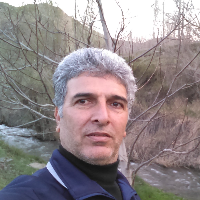The Role and Function of Shells and Shell Beads in the Temple Surkh Dom Lori
Author(s):
Article Type:
Research/Original Article (دارای رتبه معتبر)
Abstract:
Shell, as the natural shell of some mollusks, has always interested humans. Some of these species have been part of man's diet since the beginning of his cultural development. In contrast, others have been used as natural utensils or as ornaments. Among the people, the characteristics of this shell group are clarified based on their spatial analysis, which is often placed in religious contexts such as shrines as special offerings and gifts or grave gifts with the deceased. While in some Far Eastern cultures, they have been used as money in some cases. The Surkh Lori is one of the key areas of the second millennium BC. It is located in western Iran's region behind the mountain (Lorestan). It was first excavated by Erich Schmidt in 1938 and introduced as a temple. Many of the objects found in this area are votive offerings made by the area's people for the good of this Temple. Among these objects, at least 532 sea shells have been found. Their origin is determined according to their biological typology from the Persian Gulf to the Sea of Oman. The abundance of shells such as Kowzak or Cowries indicates that this Temple belonged to a female goddess, probably "Ninlil," because of the accompaniment of such shells in the context of the first millennium BC; It is commonly reported in the graves of women and children.
Keywords:
Shell , Shell beads , Sorkh Dom Temple , Iron Age , Loristan
Language:
Persian
Published:
Journal of Archaeological Studies, Volume:15 Issue: 1, 2023
Pages:
213 to 241
https://www.magiran.com/p2589435
سامانه نویسندگان
مقالات دیگری از این نویسنده (گان)
-
The Role of Earthquakes in the Distribution of Bronze and Iron Age Settlements in the East of Central Zagros, Iran
Parvaneh Ahmadtajari, *, Mehdi Zare
Parseh Journal of Archaeological Studies, -
Structuralism in archeology and its application in the analysis of cultural materials left from the past
Mohammadhassan Salek Akbari, *
Iranian Journal of Anthropology Research,



